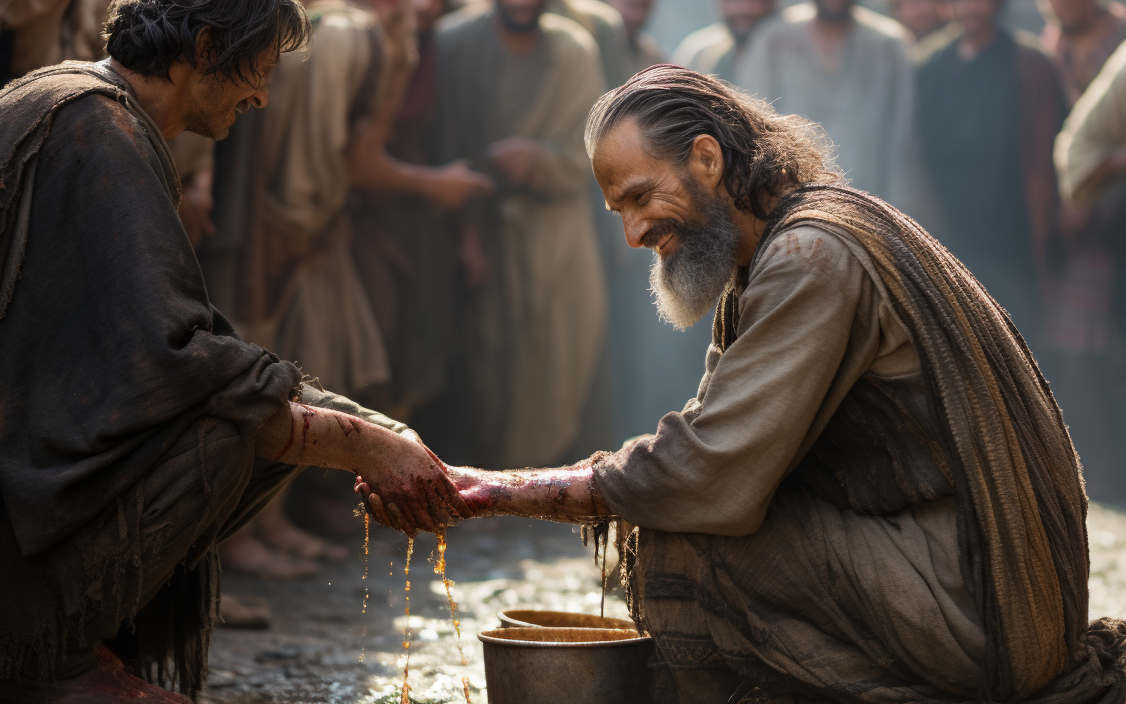Lessons from Leprosy

Today, we invite you to journey through a tale of transformation, from a stark life of isolation and despair, depicted in the ancient texts of Leviticus, to a place of healing and hope. Imagine the plight of a person afflicted with leprosy in those times, not just battling a devastating physical condition but also enduring the heartache of being ostracised, the pain of separation from loved ones and community. Their existence was not just a fight against a disease but against a relentless tide of societal rejection and loneliness.
In Leviticus, we see a vivid description of leprosy – a disease that didn't just ravage the body but also one's clothes and home. Imagine that! Something so invasive it didn't just stop with you; it penetrated every part of your life. Lepers were the outcasts of society, separated, living in a continual state of uncleanness, as Leviticus 13 illustrates. The only interaction they had was with a priest, the bridge between their world of isolation and the community they longed to rejoin. The priest didn't come with remedies or cures but merely to observe, to pronounce clean or unclean based on the disease's progression. The law was clear: avoid contact, avoid contamination.
But isn't it fascinating how leprosy in the Bible isn't just a physical ailment? It's a powerful metaphor for sin – pervasive, corrupting, and isolating. Just as leprosy disfigures the body, sin ravages the soul, leaving us spiritually marred and distanced from the divine embrace we so desperately seek. The rituals of cleansing, as detailed in Leviticus 14, with birds, cedar wood, scarlet yarn, and hyssop, were not just about physical restoration but symbolised a deeper, spiritual cleansing.
Now, let's delve into the profound significance of each element used in this cleansing ritual. The two birds, one sacrificed and the other set free, represent the profound truth of redemption and freedom found in the sacrifice of Jesus. The cedar wood, known for its durability and strength, symbolises the eternal and unshakeable Kingdom of God. The scarlet yarn, a vivid reminder of sin and impurity, is transformed in this context into a symbol of the cleansing power of sacrifice. And the hyssop, a herb used for purification, connects us to the sacrificial blood that marks us as safe, as seen in the Passover.
In the midst of these symbols and shadows of things to come, Jesus enters the scene, redefining the approach to leprosy and sin. In Matthew 8:2, a man with leprosy approaches Jesus, not with a demand but with a humble recognition of Jesus' authority: "Lord, if you are willing, you can make me clean." Notice the contrast here. The law said, 'Do not touch, lest you be defiled.' Jesus, however, reaches out, touches the man, and says, "I am willing; be clean." In that moment, the law's boundary is crossed, and a new era of grace and truth is ushered in. Jesus doesn't just look at our 'leprosy' – our sin – He touches it, He heals it, and He restores us.
As we reflect on the profound sacrifice of Jesus, symbolised in the bread and wine, let's remember that we are all like that leper, marred by our own sins, our own 'leprosy.' But in Jesus, we find someone who is not only willing but able to cleanse us, to heal us, and to restore us to our rightful place in the community of God. Through baptism, we are not just washed; we are made new, infused with the life and love of Christ.
So, as we continue on our journey, may we do so with the assurance that in Jesus, our 'leprosy' is healed, our sins are washed away, and we are invited into an eternal fellowship with God. Let's hold fast to this promise, walking each day in the light of His love and grace. May God bless us all as we journey towards His Kingdom, and, echoing the words of the ancient text, "Even so, come Lord Jesus."


